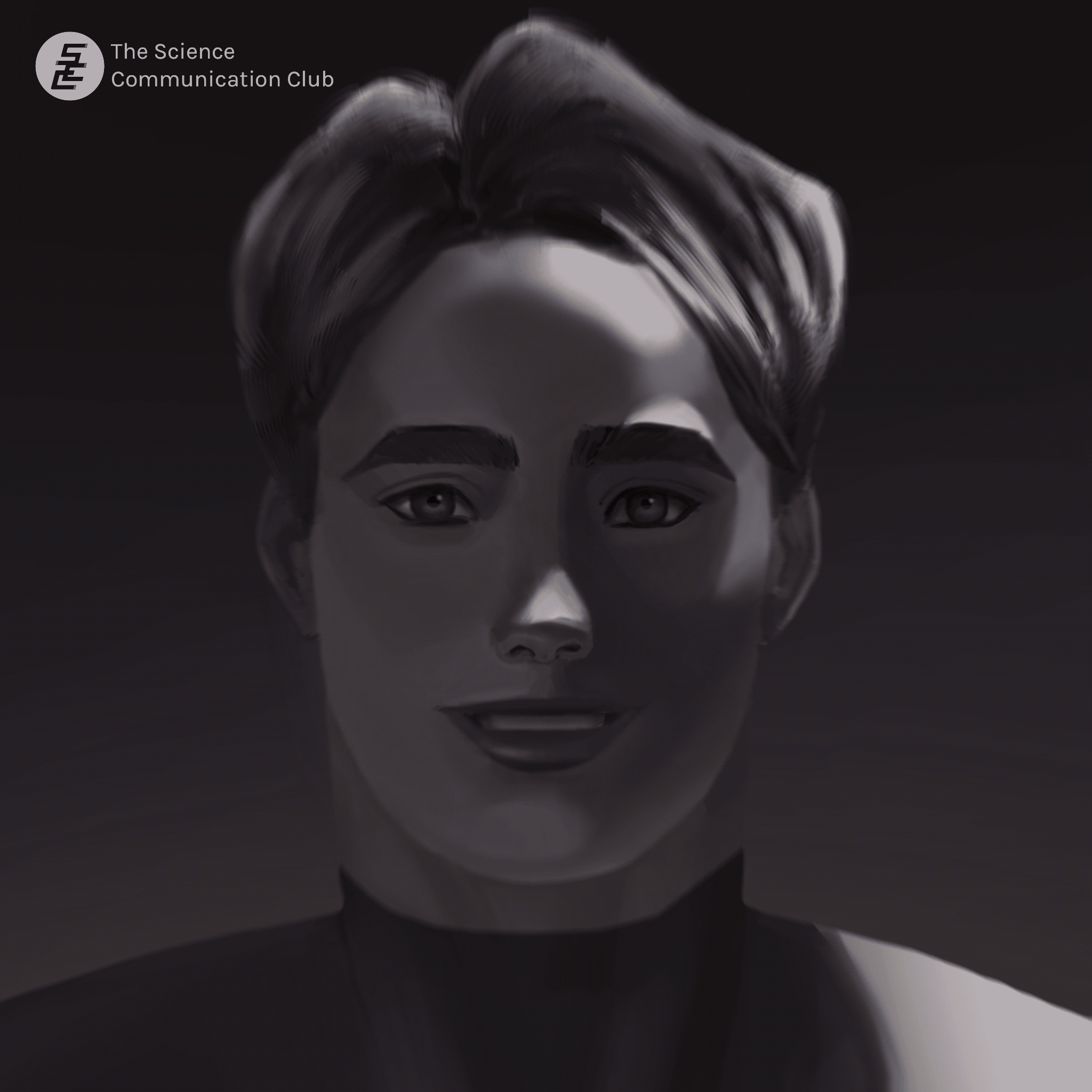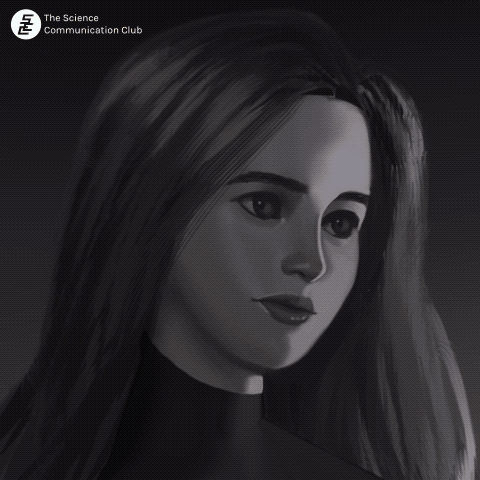
Written by Catherine Ma
Illustrated by Maggie Huang
What makes a person attractive? This question has been debated hotly throughout history. Our sayings tell us that “beauty is in the eye of the beholder”, while our stories describe objective measures of beauty, such as the magic mirror in Snow White, which unequivocally evaluates who is the fairest of them all. More recent contributions to the beauty argument are similarly mixed: motivational throw pillows assure us that beauty is about being yourself, incels argue that beauty is in the jawline of the Chad, skincare gurus promise it’s in their special seven-step routine.
Let’s first tackle the less comfortable yet relatively obvious factor to beauty: there are certain biological traits which are considered attractive by most people, which means that, by virtue of genetics, some individuals have better-looking faces.
There are three universal cues for evaluating facial attractiveness, which most people apply to others irrespective of race or culture. The first is facial symmetry: generally, people find symmetrical faces more attractive 1. That means that we tend to prefer faces whose halves more closely resemble each other.

The second is facial averageness, which describes how “average” a face and its features are 2. Think of it as Goldilock’s rule for facial features: we prefer features that are not too big or small, too thin or thick, or too wide or close, but are instead just right. This may be surprising to some, as we tend to view certain uncommon features as more attractive, such as unusually wide eyes or high cheekbones. However, average features typically indicate that a person is likely to be in good or, at the very least, normal health. Contrastingly, extreme features can indicate the opposite. Since we’re evolutionarily motivated to seek reproductive partners with healthy genes (even if we lack the interest or ability to reproduce with our chosen partners), we find individuals with average features more attractive.
Beyond these two cues, we also evaluate attractiveness based on perceived skin health. Indications of health problems, including sallowness or skin conditions which change the homogeneity of skin, can make faces appear less attractive 3. Contrastingly, cues of good health, such as yellow or red undertones, are viewed as attractive 4.
A fourth biological cue is sexual dimorphism. This one is both less understood and more sensationalized than the other three, and describes the effect of sex differences on features such as body size, primary and secondary sex characteristics, and, more importantly for us, facial features. “Masculine” features develop largely thanks to testosterone 5, a hormone common in those with XY chromosomes. They include a larger jaw, more prominent cheekbones, and thinner cheeks and lips 6. Contrastingly, “feminine features” develop with the help of estrogen and other hormones common in those with XX chromosomes 5, resulting in a smaller jaw, rounder lips and cheeks, and a smaller face 6.
Sexual dimorphism cues tend to affect us differently based on our gender and sexual orientation. When evaluating women, straight men tend to prefer women with more feminine faces—no surprises there 7. Interestingly, while gender nonconformity is more common in queer women 8, gay women also gave higher ratings to feminine faces, although not to the same extent as straight men 7.
The differences get more interesting when discussing people who are attracted to men. Gay men tend to prefer more masculine male faces 7, although there are differences in this preference based on whether they identify as tops, bottoms, or versatile 9 (yes, there are studies on this!).
Research on what straight women prefer is less clear and oftentimes contradictory: in some studies, they preferred masculine male faces; in others, feminine male faces; in yet more studies, they preferred neither 7. Fascinatingly, there is some evidence that this preference might coincide with women’s hormonal cycles, with women more likely to prefer masculine faces while ovulating 10 and more likely to prefer feminine faces when on birth control 11. Countless evolutionary psychology studies have tried to explain these results: perhaps a more masculine face indicates better health and therefore better genes 2; perhaps a more feminine face indicates a guy with a better personality 11.
Either way, it seems that beauty isn’t entirely subjective; biological traits do matter for most people, even if they don’t always have a consistent effect. Does that mean the majority of us acne-ridden, asymmetrical sad sacks should delete our dating apps and start adopting cats? Of course not—biology, while important, only provides a first impression. Perceived personality plays an important factor: if people believe someone is honest or creative, they tend to rate their faces as more attractive; conversely, they tend to give lower ratings to faces of those they think are aggressive 13. Hey, what do you know—maybe nice guys (and gals, and nonbinary pals) can finish first.
With all this being said, our attraction to people is too complex to be fully described by lab studies wherein freshmen rate a dozen faces on a computer screen in the asbestos-ridden basement of Sidney Smith Hall. Attraction is a short sprint; romance and relationships, on the other hand, are a marathon effort. After all, Snow White’s stepmother got to be the fairest of them all, but you, dear reader, are undoubtedly the better partner. Perhaps we should learn from her example and worry less about our reflections in the mirror.
Sources:
- Little AC, Jones BC, Debruine LM. Facial attractiveness: evolutionary based research. Philos Trans R Soc Lond B Biol Sci. 2011;Vol.366(1571): p. 1638-1659. doi: https://doi.org/10.1098/rstb.2010.0404
- Thornhill R, Gangestad SW. Human facial beauty. Hum Nature. 1993;Vol.4: p. 237-269. doi: https://doi.org/10.1007/BF02692201
- Fink B, Grammar K, Thornhill R. Human (Homo sapiens) facial attractiveness in relation to skin texture and color. J Comp Psychol. 2001;Vol.115(1): p. 92-99. doi: https://doi.org/10.1037/0735-7036.115.1.92
- Stephen ID, Law Smith MJ, Stirrat MR, Perrett DI. Facial Skin Coloration Affects Perceived Health of Human Faces. Int J Primatol. 2009;Vol.30(6): p. 845-857. doi: https://doi.org/10.1007%2Fs10764-009-9380-z
- Kleisner K, Turecek P, Roberts SC, Havlicek J, Valentova, JV, Akoko RM, Leongomez JD, Apostol S, Varella MAC, Saribay SA. How and why patterns of sexual dimorphism in human faces vary across the world. Sci Rep. 2021;Vol.11(1):5978. doi: https://doi.org/10.1038/s41598-021-85402-3
- Rhodes G. The evolutionary psychology of facial beauty. Annu Rev Psychol. 2006;Vol.57: p. 199-226. doi: https://doi.org/10.1146/annurev.psych.57.102904.190208
- Glassenberg AN, Feinberg DR, Jones BC, Little AC, Debruine LM. Sex-dimorphic face shape preference in heterosexual and homosexual men and women. Arch Sex Behav. 2010; Vol.39(6): p. 1289-1296. doi: https://doi.org/10.1007/s10508-009-9559-6
- Rieger G, Linsenmeier JAW, Bailey JM. Childhood gender nonconformity remains a robust and neutral correlate of sexual orientation: reply to Hegarty (2009). Dev Psychol. 2009;Vol.45(4): p. 901-903. doi: https://doi.org/10.1037/a0016252
- Zheng L, Zhang J. Demographic and Geographic Differences in Facial Masculinity Preferences Among Gay and Bisexual Men in China. Arch Sex Behav. 2021;Vol.50: p. 3711-3723. doi: https://doi.org/10.1007/s10508-021-02082-w
- Penton-Voak IS, Perrett DI, Castles DL, Kobayashi T, Burt DM, Minamisawa R. Menstrual cycle alters face preference. Nature. 1999;Vol.399: p. 741-742. doi: https://doi.org/10.1038/21557
- Ekrami O, Claes P, Shriver MD, Weinberg SM, Marazita ML, Walsh S, Van Dongen S. Effects of Male Facial Masculinity on Perceived Attractiveness. Adapt Human Behav Physiol. 2021;Vol.7: p. 73-88. doi: https://doi.org/10.1007/s40750-020-00156-y
- Oh DW, Grant-Villegas N, Todorov A. The eye wants what the heart wants: Female face preferences are related to partner personality preferences. J Exp Psychol Hum Percept Perform. 2020;Vol.46(11): p. 1328-1343. doi: https://doi.org/10.1037/xhp0000858
- Niimi R, Goto M, De Pascalis V. Good conduct makes your face attractive: The effect of personality perception on facial attractiveness judgments. PLoS ONe. 2023;Vol.18(2): e0281758. doi: https://doi.org/10.1371%2Fjournal.pone.0281758